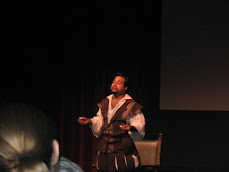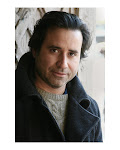`BALTIMORE WALTZ' PUTS FARCICAL SPIN ON AIDS CRISIS
From: The Palm Beach Post
Date: May 6 1994
Author: Hap Erstein
The theater has addressed the AIDS health crisis in a variety of eloquent ways, but only recently has it gotten around to the comic response. But laughter can lead to understanding too, as Paula Vogel demonstrates in her funny, cathartic play, The Baltimore Waltz.
Named for the city in which her brother died of the disease, the wildly imaginative work is her elegy to him in farce form. It is performed with an aptly manic frenzy by a nimble Area Stage cast that captures Vogel's comic punch and poignance.
Actually, AIDS is never mentioned in the script. But such is the pervasiveness of its plague that Vogel merely has to put Carl, a young, gay male librarian from San Francisco, onstage with a doctor hovering in the background and she knows the audience will make the connection.
Vogel attacks her subject obliquely, from a satiric distance, by making Carl's sister Anna the patient. According to her doctor, who spouts mouthfuls of medical gobbledygook, she has contracted the dreaded ATD - Acquired Toilet Disease. It is a fatal syndrome that seems to afflict mainly single elementary school teachers who contract it from using the potty seat of their students without taking proper precautions. The government has no answers to the disease beyond the cautionary sloganeering, ``Squat, don't sit.''
So, off go Anna and Carl on an escape through Europe, from Paris to Amsterdam to Berlin to Vienna. She takes her first and probably last trip to the Continent as an opportunity to give in to repressed sexual escapades as well as to seek a miracle cure from the elusive experimentalist, Dr. Todesrocheln. He has a purported treatment for ATD, as well as an uncanny resemblance to Dr. Strangelove.
Film references abound, as Carl goes in search of Harry Lime, The Third Man, in a loopy spy-vs.-spy plot involving something mysterious and sinister in Carl's childhood stuffed bunny.
The production succeeds at establishing its cinematic pace and transitions, thanks to John Rodaz's playful direction, his film noir lighting and surreal set design, as well as a vigorous, versatile performance by Chaz Mena as all the men Carl and Anna encounter on their odyssey.
Vogel paints these characters in broad national stereotypes, from amorous Frenchmen to brusque Germans to the fabled Dutch boy of dike-plugging fame, now at middle age. Yet when Carl pauses to shows us his travel slides, it seems possible that they never left for Europe at all. At many junctures, just as The Baltimore Waltz seems headed for sheer silliness, Vogel sidesteps that fate with several disquieting speeches and ultimately with a stunning final twist.
As Anna, Phebe Finn has a sweet, earthy quality and is both comic and moving racing through the generic mental stages of a terminal patient. Jerry Pacific's Carl is a caring helpmate to his sister, a man of considerable mystery and, when we first see him, someone with a droll capacity for anger. Ultimately, though, it is Mena who walks off with the production with his quick-change tour de force, some dozen separate, vivid and continually amusing roles.
The Baltimore Waltz is a highly individual, heartfelt response to AIDS, but delivered through the funnybone.





















No comments:
Post a Comment